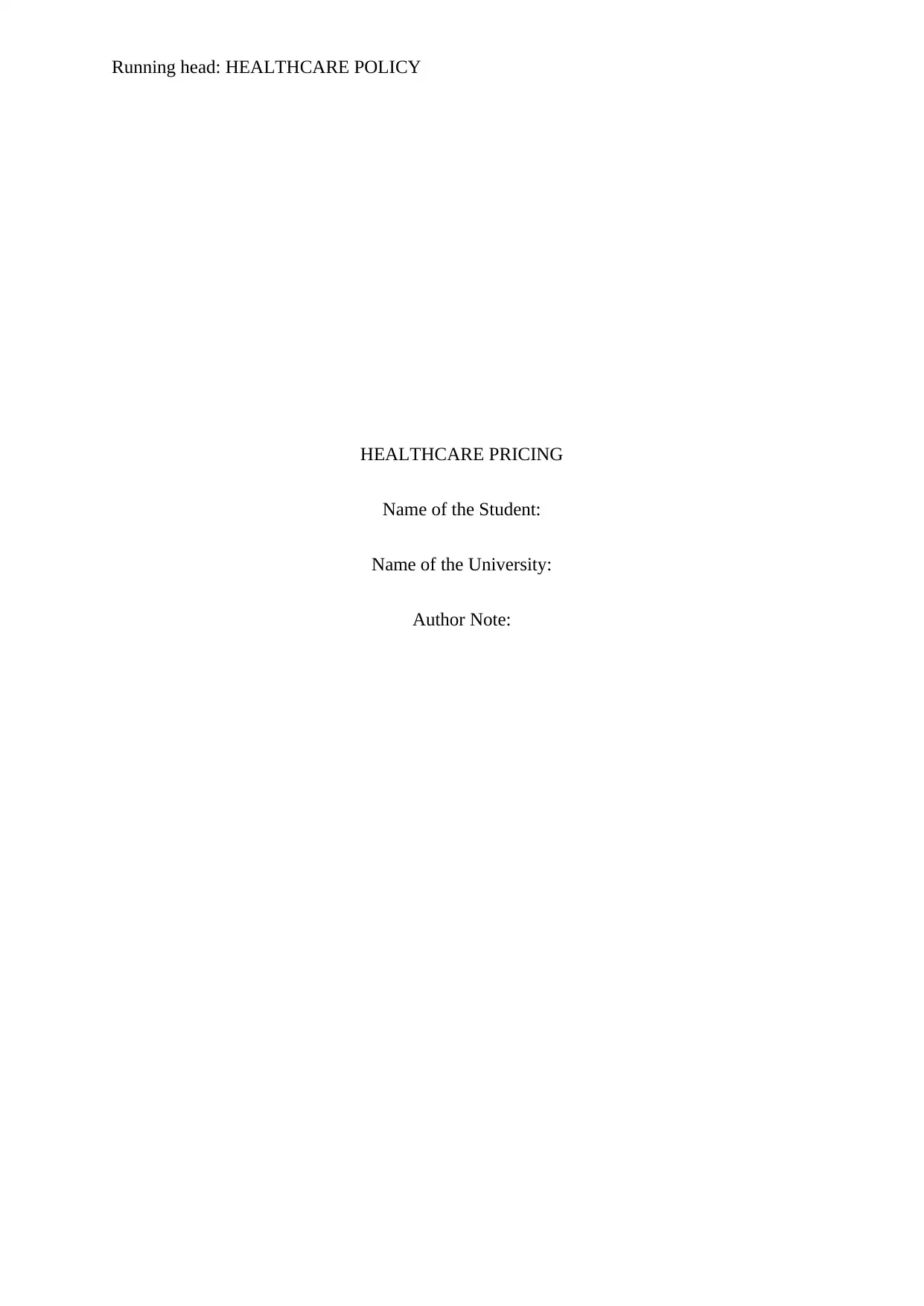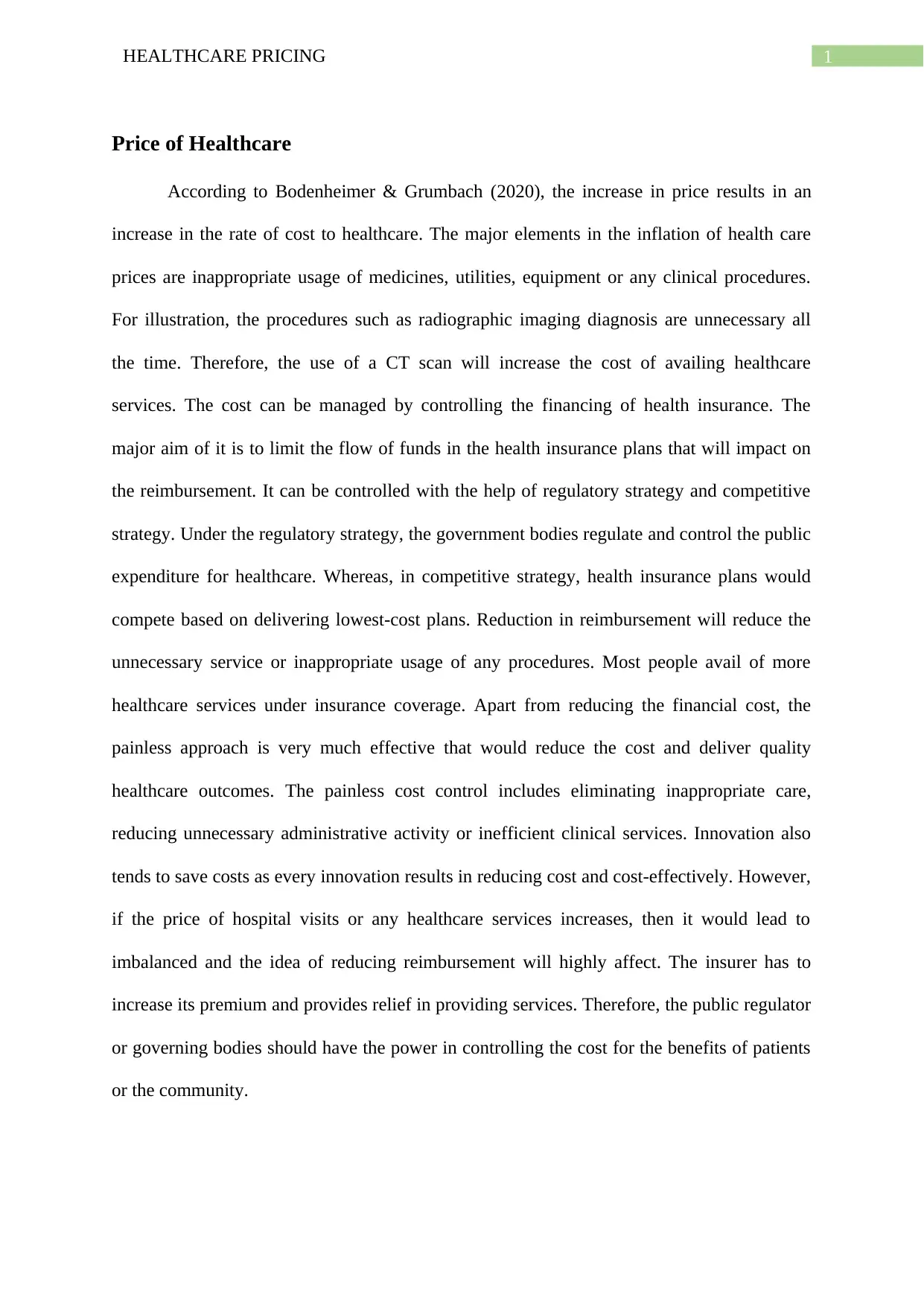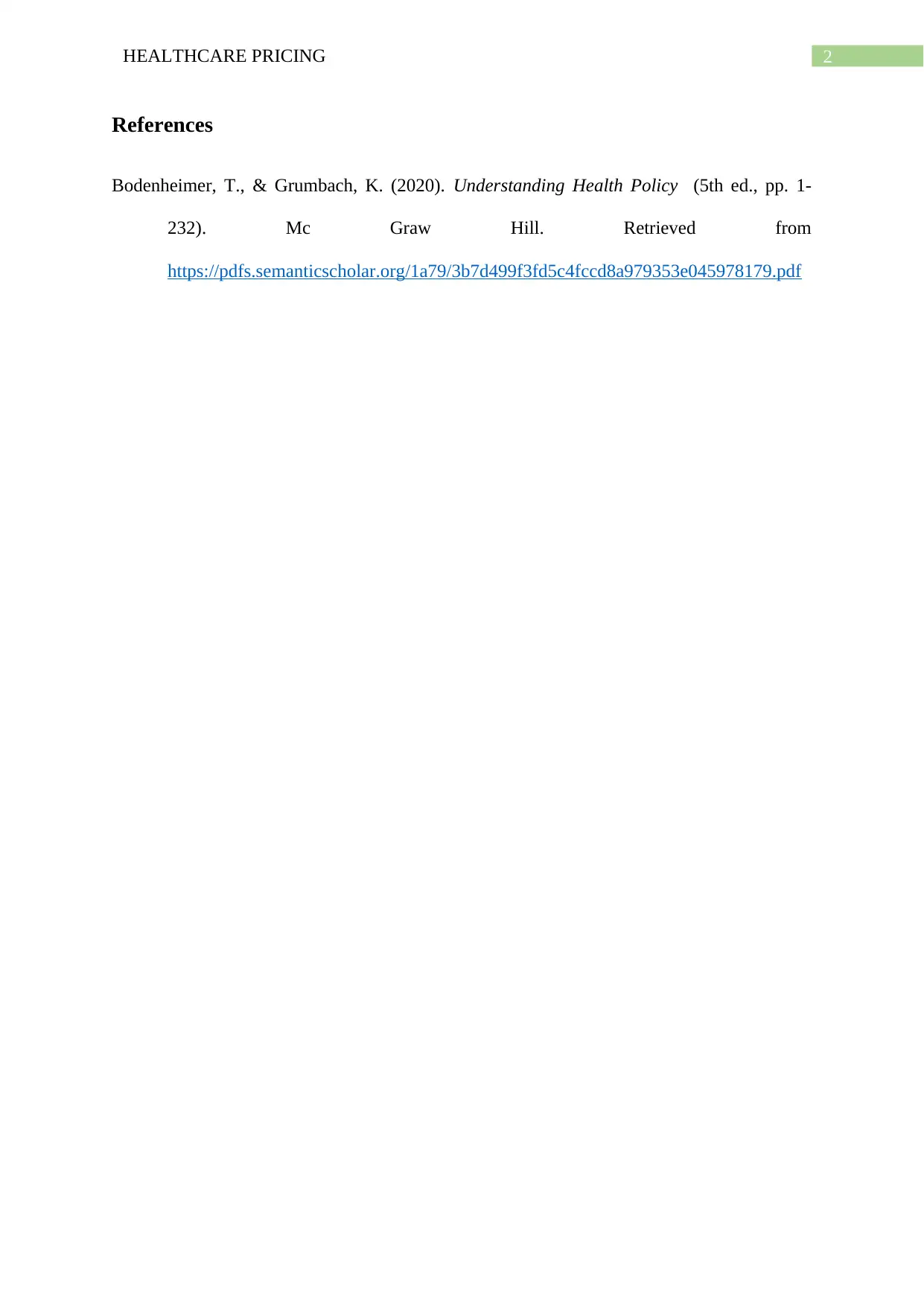Healthcare Pricing Report - Analysis, Discussion, and Findings
VerifiedAdded on 2022/08/09
|3
|384
|18
Report
AI Summary
This report examines the factors influencing healthcare pricing and the strategies employed to manage costs. It highlights the impact of inappropriate usage of medical services and equipment on the inflation of healthcare prices, referencing the work of Bodenheimer & Grumbach (2020). The report discusses the role of health insurance and reimbursement strategies in controlling costs, including both regulatory and competitive approaches. It emphasizes the importance of reducing unnecessary services and administrative inefficiencies to achieve cost-effective healthcare delivery. The report also touches upon the potential impact of innovative solutions on reducing healthcare costs and the need for governmental oversight to ensure fair pricing and access to care for patients and the community. The report concludes that a balanced approach is necessary to address healthcare costs effectively.
1 out of 3










![[object Object]](/_next/static/media/star-bottom.7253800d.svg)